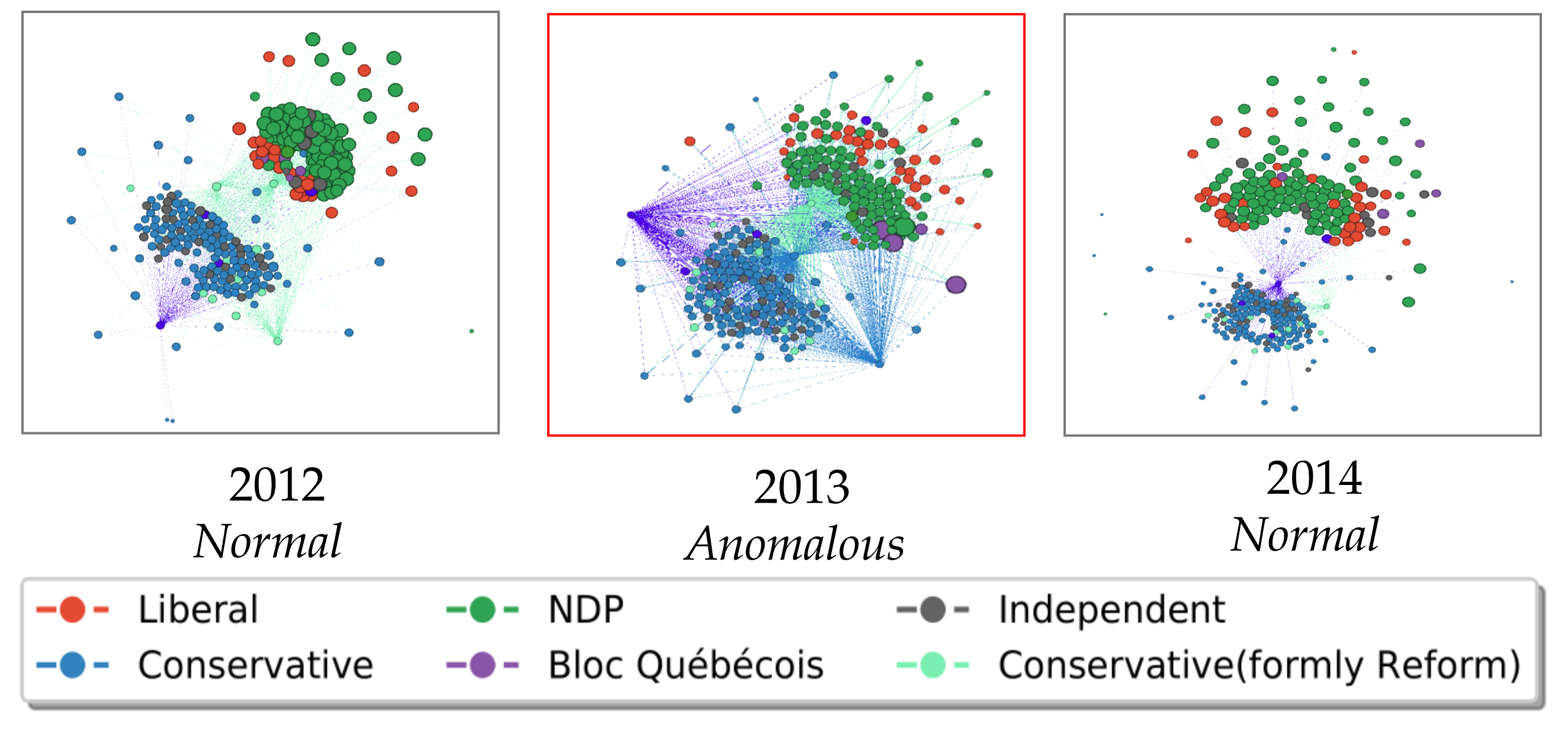Laplacian Change Point Detection for Single and Multi-view Dynamic Graphs
Dynamic graphs are rich data structures that are used to model complex relationships between entities over time. In particular, anomaly detection in temporal graphs is crucial for many real world applications such as intrusion identification in network systems, detection of ecosystem disturbances and detection of epidemic outbreaks. In this paper, we focus on change point detection in dynamic graphs and address three main challenges associated with this problem: i). how to compare graph snapshots across time, ii). how to capture temporal dependencies, and iii). how to combine different views of a temporal graph. To solve the above challenges, we first propose Laplacian Anomaly Detection (LAD) which uses the spectrum of graph Laplacian as the low dimensional embedding of the graph structure at each snapshot. LAD explicitly models short term and long term dependencies by applying two sliding windows. Next, we propose MultiLAD, a simple and effective generalization of LAD to multi-view graphs. MultiLAD provides the first change point detection method for multi-view dynamic graphs. It aggregates the singular values of the normalized graph Laplacian from different views through the scalar power mean operation. Through extensive synthetic experiments, we show that i). LAD and MultiLAD are accurate and outperforms state-of-the-art baselines and their multi-view extensions by a large margin, ii). MultiLAD's advantage over contenders significantly increases when additional views are available, and iii). MultiLAD is highly robust to noise from individual views. In five real world dynamic graphs, we demonstrate that LAD and MultiLAD identify significant events as top anomalies such as the implementation of government COVID-19 interventions which impacted the population mobility in multi-view traffic networks.
PDF Abstract

